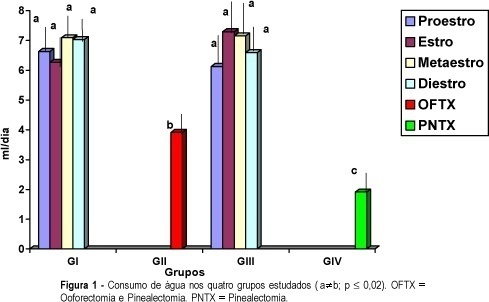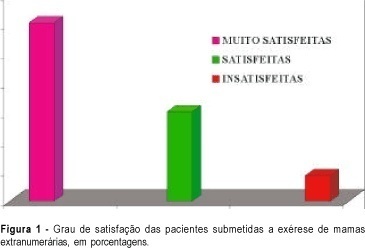Summary
Revista Brasileira de Ginecologia e Obstetrícia. 1999;21(6):335-339
DOI 10.1590/S0100-72031999000600006
Purpose: to study the sensitivity and specificity based on fetal oxygen saturation (SpO2) values and fetal heart rate (FHR) patterns during labor, for the prognosis of acidotic fetuses at birth. Patients and Methods: SpO2 values were obtained by fetal pulse oximetry technique. A fetal SpO2 value > or = 30% was considered normal, and an SpO2 which remained <30.0% for more than 10 min between contractions was considered abnormal. Fetal SpO2 and FHR tracings were obtained during the first and second stage of labor. FHR classification used in the study has been derived from the National Institute of Child Health and Human Development19. Results: a total of 72 subjects were studied. The sensitivity and specificity, based on SpO2, were 61.5% and 96.6%, respectively, whereas the sensitivity and specificity based on FHR patterns were 69.2% and 66.1%. Positive and negative predictive values based on SpO2 were 80% and 91.9%, respectively, and based on FHR patterns were 31% and 90.7%, respectively. Conclusions: a good fetal SpO2 specificity for prognosis of acidotic fetuses at birth was found, if compared with FHR pattern specificity, whereas sensitivity was poor for both methods. However, the number of acidotic fetuses was too small to allow more conclusions
Summary
Revista Brasileira de Ginecologia e Obstetrícia. 1999;21(6):327-331
DOI 10.1590/S0100-72031999000600005
Purpose: the authors modified the original Ayre spatula aiming at optimizing endocervical collection. The study verified if the capacity of the modified spatula in collecting endocervical cells is similar to that obtained by the combination brush-Ayre spatula and better than the Ayre spatula alone. Methods: a diagnostic and single-blind simple study was performed. The patients were randomly assigned to one of three collection groups (Ayre spatula, combination of brush-Ayre spatula and modified spatula). After excluding data of 25 patients, 276 smears were evaluated with attention to the presence of squamous, metaplastic, and columnar endocervical cells and their combination. In order to compare methods, the chi² test with corrected Yates values and the exact Fisher test were used. Results: the combination brush-Ayre spatula presented the best performance in the production of columnar endocervical cells. When compared to the combination of brush-Ayre spatula, the modified spatula produced less bleeding in the smears (chi² = 7.98; p = 0.004) and it was not statistically inferior in obtaining metaplastic cells (chi² = 2.97; p = 0.08). When compared to the Ayre spatula, it was statistically superior in obtaining columnar endocervical cells (chi² = 21.37; p = 0.000004) and presented a greater percentage of smears presenting squamous cells accompanied by metaplastic and/or columnar endocervical cells (chi² = 10.97; p = 0.0009). Conclusions: it was concluded that the modified spatula improved the quality of the sample obtained with the Ayre spatula alone, being able to be used in populations where the use of the brush was impossible.

Summary
Revista Brasileira de Ginecologia e Obstetrícia. 1999;21(6):317-321
DOI 10.1590/S0100-72031999000600003
Purpose: to evaluate the effects of oophorectomy and pinealectomy on the ingestion of water and NaCl solution by adults female rats. Methods: forty-eight adult virgin female rats (Wistar EPM 1) weighing 200 g were kept on routine laboratory care and fed water and Purina rat chow ad libitum. The animals were random by divided into four groups: GI - maintained without manipulation as a control group (n = 20); GII - submitted to bilateral oophorectomy (n = 8); GIII - submitted to pinealectomy (n = 12); GIV - submitted to bilateral oophorectomy and pinealectomy (n = 8). All animals were maintained in individual cages. After three weeks the cycle phase was daily determined by vaginal smears and the volume of water and NaCl (0.25 M) solution was daily recorded for approximately three weeks. Results: the main results were: 1) rats submitted to pinealectomy alone presented a greater frequency of the estrous phase, some of these undergoing persistent estrus; 2) the liquid ingestion (water and saline solution) did not alter during the phases of the estrous cycle; 3) rats submitted to oophorectomy presented greater water ingestion and after pinealectomy water consumption returned to normal levels; 4) the oophorectomized and pinealectomized animals and those only oophorectomized showed reduction in the average consumption of saline solution. Conclusions: the data suggest that the ovaries and the pineal gland could have effects on the ingestion of salt and water in adult rats.

Summary
Revista Brasileira de Ginecologia e Obstetrícia. 1999;21(8):475-479
DOI 10.1590/S0100-72031999000800008
SUMMARY Purpose: to evaluate the role of prenatal diagnosis of gastroschisis in the quality of assistance to and in the evolution of neonates with gastroschisis. Methods: a retrospective survey of 25 charts of neonates with gastroschisis treated at the State University of Campinas, between January 1989 and June 1998. Results: comparing the groups with prenatal (PN) and neonatal (NN) diagnosis, no differences regarding incidence of prematurity, birth weight and relations hip between weight and gestational age were observed. The median time from birth to surgery was 5 h. Such interval was shorter in the PN than the NN group (2.25 h versus 13 h; p<0.05). Primary closure of the defect was achieved in 17 neonates (68%) of both groups. Although this difference was not statistically significant, survival was higher among infants of the PN group (85.7% versus 45.5%). Conclusions: prenatal diagnosis of gastroschisis contributes favorably to improve perinatal assistance, resulting in reduced mortality of these children.
Summary
Revista Brasileira de Ginecologia e Obstetrícia. 1999;21(8):465-470
DOI 10.1590/S0100-72031999000800007
SUMMARY Objective: to evaluate the inclusion parameters in the selection of cases of (tubal) ectopic pregnancy for expectant management and to assess the results. Methods: a prospective study was carried out in 70 patients with unruptured (tubal) ectopic pregnancy, with the objective to carry out an expectant management. The main inclusion criteria in this study were the diameter of the tubal mass, that should be equal or inferior to 5,0 cm, reduced titles of beta-hCG (beta fraction of the chorionic gonadotropic hormone) as compared to the initial value within an interval of 48 h, hemodynamic stability, wishes for future pregnancy and a written permission to participate in the study. All patients were observed in the hospital and when reduction in beta-hCG titles was observed, the patients were discharged from the hospital and followed in the outpatient department, with weekly determinations of beta-hCG until levels lower than 5 mIU/ml were reached, that were considered successful. Results: of the 70 patients who underwent expectant management, only one needed a surgical intervention, because of tubal rupture. The initial values of beta-hCG of the patients ranged from 27 mIU/ml to 41,000 mIU/ml. The average diameter of the tubal mass was 2.9 cm. The presence of free liquid in the peritoneal cavity was observed in 50 patients, small amount in 26 patients, moderate in 16 and large in 8 patients. The ultrasonographic resolution of hematosalpinx occurred in 58 patients and tubal ring was visualized in 12 patients. On color Doppler, 52 were at low risk and 18 at medium risk. Conclusions: the expectant management should be applied with safety in the cases that respect the inclusion criteria, the index of success of this study being 98.6%.
Summary
Revista Brasileira de Ginecologia e Obstetrícia. 1999;21(8):459-463
DOI 10.1590/S0100-72031999000800006
SUMMARY Purpose: to examine the response of the fetal heart rate (FHR) and middle cerebral artery resistance (MCA PI) to vibratory stimulation (VAS) in normal human fetuses. Methods: when the fetuses were without activity (in apnea and without corporal movements), we obtained baseline measurements of MCA PI and FHR before and after the application of a 3-sec vibratory acoustic stimulus. Real time ultrasonography with pulsed wave and color Doppler imaging was used for the execution of the study. The VAS was performed using a bicycle horn with 400 to 4000 Hz and sound pressure was 65 to 110 dB. Results: the FHR before VAS was 139 ± 3.14 bpm and after VAS was 153 ± 7.23 bpm (p<0.0001). The MCA PI rate before VAS was 1.84 ± 0.07 and after VAS was 1.56 ± 0.04 (p<0.001). In all cases we observed a fetal response with vigorous corporal movements, FHR rise and MCA PI reduction after VAS. Conclusions: we conclude that VAS, in human fetuses near term, for 3 sec as described in this study, determines some response, with increase in FHR and corporal movement and MCA PI reduction. Although we have a tendence to say that VAS determines fetal cerebral flow increase, these data do not allow such clinic interpretation.

Summary
Revista Brasileira de Ginecologia e Obstetrícia. 1999;21(8):453-456
DOI 10.1590/S0100-72031999000800005
ABSTRACT Purpose: to evaluate the degree of satisfaction of patients submitted to resection of a supernumerary breast, in terms of esthetics, and the rate of complications. Patients and Methods: twenty-three women submitted to surgical treatment for removal of axillary breast tissue at the Breast Unit of the HC-UFG, between July 1994 and September 1997, were evaluated. Age ranged between 20 and 49 (mean 35 years). Patient complaints included local pain, discomfort and questions on personal esthetics. The patients' satisfaction was evaluated through an interview in which they reported to be very satisfied, satisfied, unsatisfied or regretting the surgery. The HC-UFG team also evaluated each of these patients, considering the cosmetic result as very good, good or poor. Results: according to the evaluation by the patients themselves, 61% were very satisfied and none regretted the surgery. The evaluation carried out by the medical team was stricter, as only 22% of the cases were rated as very good by the evaluators. In terms of complications, there was a 22% incidence of seroma and 13% of infection. Conclusion: the discrepancy among the patients' and doctors' ratings seems to demonstrate that the degree of satisfaction of the patients is higher than that one could initially suppose, a fact that motivates us to carry on offering this treatment modality to those who wish to have it, even considering the relative high rate of complications.

Summary
Revista Brasileira de Ginecologia e Obstetrícia. 1999;21(8):447-449
DOI 10.1590/S0100-72031999000800004
SUMMARY Purpose: the number of male sexual partners, age, precocious beginning of sexual activity, cigarette smoking and oral contraception were correlated with human papillomavirus (HPV) infection, as were cervical ectopia, although with conflicting results. The objective is to analyze a group of women with HPV infection and to verify the incidence of cervical ectopia. Methods: we have studied 471 women with Papanicolaou smears suggesting HPV infection (Schneider et al.'s criteria) and its relationship with cervical ectopia, beginning of sexual activity and the use of oral contraceptive. Results: of the total of cases, 182 (38.6%) had ectopia. Of these, 157 (86.3%) were 30 years old or less, compared to 47.8% of women without ectopia (p<0.001, chi² test). A percentage of 77.4 of cases with ectopia had the beginning of sexual activity before 18 years compared to 71.3% cases without ectopia. Among women with ectopia, 45.7% had taken the pill recently compared to 24.3% which had not (p<0.001, chi² test). Conclusions: it was concluded that the beginning of sexual activity was not correlated with ectopia. The prevalence of ectopia was more commom in women under 30 years and/or in use of oral contraceptive.